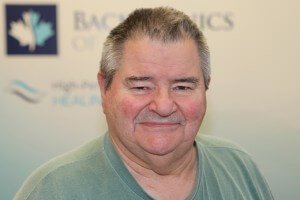Patients suffering with serious back pain or neck pain sometimes opt for spinal surgery when they believe they have exhausted all options for treatment. The risks and complications of surgery are real and must be considered seriously. We encourage everyone to become informed about non-surgical spinal decompression, before agreeing to undergo the surgeon’s knife. If you are considering spinal (back) surgery to relieve your low back pain or neck pain, you must read on. This article discusses the specific risks and complications of implants and fusions.
Spinal Surgery
Spinal surgery of the cervical (upper), thoracic (middle) or lumbar (lower) spinal regions is usually performed to remove any excess bone or soft tissue that may be pressing upon spinal nerves, which govern the functions of many organ systems and extremities. It is undue pressure on nerves that is the source of serious, chronic back pain and neck pain. Any number of conditions may be the cause of the unnatural pressure: bulging or ruptured disc, bone spur formation, bone fragments from trauma, chronic degeneration.
There are different spinal surgery procedures. The most common surgeries are microdiscectomy, laminectomy and spine fusion.
The fact that spinal surgery occurs so close to the actual spinal cord and affected spinal nerves makes it a very delicate procedure. One false move by the surgeon can cause lifelong nerve damage or even paralysis. Besides human error, there are real and serious risks to spinal surgery that must be understood and carefully considered. Know the risks and potential outcomes before you make a final decision to allow a surgeon to operate on your spine.
Implant & Fusion Complications
- Spinal Fusion Concerns If back surgery involves a spinal fusion (two vertebrae are fused together, because the disc between them is so damaged), the fusion might not bond well at the operated levels. This is referred to as a “nonunion.” If the bones do not fuse together, then the operation must be repeated. If hardware is used to secure a fusion, the bones will have a better chance to grow together. However, sometimes the hardware itself can cause a problem if it moves, slips or breaks. Again, a second surgery will be done to try and correct the problem.
Some fusions take longer than expected to heal. This type of problem case is called a “delayed union”.
The term “pseudarthrosis” means false joint. This term describes either a fractured bone that has not healed or an attempted fusion that has not been successful. A pseudarthrosis usually means that there is motion between the two bones that should be fused together.
If the vertebrae in a surgical fusion do not heal, the patient’s pain will likely continue and might even increase over time. The patient may require additional surgery for a pseudarthrosis. The surgeon might want to add more bone graft, replace the metal hardware, or add an electrical stimulator to try to get the fusion to heal.
- Hardware Fracture Metal screws, plates, pins and rods are used in many different types of spinal operations as part of the procedure to hold the vertebrae in alignment while the surgery heals. Once the vertebrae heal, this hardware is not really doing much of anything. There are occasions when the hardware can break or move from the correct position before the surgery is completely healed. This is called a hardware fracture. If this occurs a second surgery may be required to remove or replace the hardware.
- Implant Migration Implant migration is a term used to describe an intervertebral fusion cage that has moved out of place. If this does happen, it usually occurs soon after surgery, before the healing process has progressed to the point where the cage is firmly attached by scar tissue or bone growth. If the cage moves too far, it may not be doing its job of stabilizing the two vertebrae. If it moves in a direction towards the spine or large vessels, it may damage those structures. A problem with implant migration may require a second operation to replace the cage that has moved.
- Transitional Syndrome When the spine is healthy, the vertebrae/discs along the spine work together to absorb and distribute the any pressure or force placed on the spinal column. If one or two segments are not working properly, the neighboring segments have to take on more. So if there is a spinal fusion anywhere in the spine, the segment next to fusion will begin to take on the extra stress. Over time this can cause increased wear and tear to these neighboring vertebrae/discs. New pain may be felt coming from the newly damaged segment. This is called a transitional syndrome.
NOTE: A patient who has undergone spinal fusion is not a candidate for non-surgical spinal decompression. While we could have helped you before surgery, now we cannot even try.
Recommendation Before You Sign Up for Back Surgery
Every week at Back Clinics of Canada we see patients who have undergone back surgery. These post-surgical patients all tried just about every conventional back pain treatment available – physiotherapy, chiropractic, RMT, acupuncture, bed rest, pain medication—to heal their spines and free them from their pain. Then they opted for surgery because they believed they exhausted all their pain treatment options. These patients come to our Toronto back clinic because they’re not happy with their surgery results and still live with serious pain.
In most cases, they suffer from a spinal condition that could be treated withnon-surgical spinal decompression.
Before you sign up for spinal surgery consider non-surgical spinal decompression. It’s non-invasive, non-surgical, involves no drugs or medication. THERE ARE NO RISKS OR COMPLICATIONS WITH NON-SURGICAL SPINAL DECOMPRESSION. It has been successful for so many patients, including those who had failed surgery. (Sadly though, post-surgical patients who’ve had a spinal fusion with hardware or other implants in their spines, complete laminectomies or vertebral fractures, are NOT candidates for our care—All the more reason to consider this treatment.)
Back Clinics of Canada goal is to help as many as possible Canadians avoid back surgery if possible and live a pain free life. The risks and complications of spinal surgery are too many and too serious—for a procedure that might not even work. Spinal surgery is a good medical tool when it is appropriate. Surgery offers no guarantees. Please, consider surgery as a LAST RESORT.
Back Clinics of Canada encourages patients with serious back and neck pain to at least undergo a free consultation and examination with Dr. Ron Nusbaum to see if they qualify for non-surgical spinal decompression.
You deserve a pain-free life!









